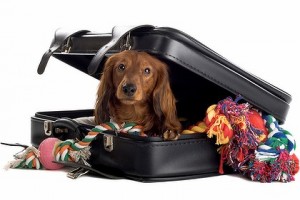01529 304273 - [email protected]
 Lyme disease is nearer than you think; it is now endemic in the UK and according to official estimates they suggest there could be up to 3,000 new cases occuring in the UK every year. The true number of cases is not known, and may be higher still. Since full recovery may not take place in many cases, the total number of people affected is accumulating. There is apparently, concern that the disease appears to be under reported and inadequately investigated.
Lyme disease is nearer than you think; it is now endemic in the UK and according to official estimates they suggest there could be up to 3,000 new cases occuring in the UK every year. The true number of cases is not known, and may be higher still. Since full recovery may not take place in many cases, the total number of people affected is accumulating. There is apparently, concern that the disease appears to be under reported and inadequately investigated.
A belated Happy New Year to everyone! One of the highlights of my holiday season was walking my dogs with a friend’s puppy. One of my dogs, Super-Dog as we could call him – is very sociable and likes to make friends with everyone and anyone. The other dog, who we will call Scaredy-Dog – is suspicious of all other dogs and it was lovely to see her make friends and find a rare play mate. Walks can be a stressful time for us when we have to pass by unfamiliar dogs. Super-Dog likes to stride ahead and say hello, Scaredy-Dog is normally hiding behind my legs and hoping to make an escape. If I go and get Super-Dog she is torn between staying with me and keeping out of the way. Now Super-Dog is in his senior years his hearing has become quite selective, and it can be a challenge to get him to listen! The end result is often a tangle of legs and leads with me trying to offer apologies all round.
 Firstly NEVER leave your baby alone with any dog. The vast majority of dogs get on well with children and babies, and child and pet get a great deal out of the experience. However always remember that a dog thinks like a dog, not a person. A dog will not consider a baby as a person, it is a nosy, smelly thing that is taking the attention of its pack members. Therefore your aim is to prepare your dog thoroughly for the new arrival to ensure all goes well.
Firstly NEVER leave your baby alone with any dog. The vast majority of dogs get on well with children and babies, and child and pet get a great deal out of the experience. However always remember that a dog thinks like a dog, not a person. A dog will not consider a baby as a person, it is a nosy, smelly thing that is taking the attention of its pack members. Therefore your aim is to prepare your dog thoroughly for the new arrival to ensure all goes well.
The sooner you start the process of preparing your dog for the arrival of a new baby, the better. The more time you spend on training him, helping him to adjust to the changes that are coming, the easier the whole process will be! The arrival should be as stress free and pleasurable for you both as possible.
 Moving house is stressful for the whole family, including your pets. Moving from a safe and familiar environment can be disorientating and can lead to behavioural problems or even your pet going missing.
Moving house is stressful for the whole family, including your pets. Moving from a safe and familiar environment can be disorientating and can lead to behavioural problems or even your pet going missing.
As well as coping with all of the upheaval during the move, it’ll take weeks for him to get used to a new territory and strange smells in the new house. Although you’ll be very busy with little time, please bear in mind the following to help make it easier and safer for him.
 A trigger is anything that irritates the airways and causes the symptoms of asthma to appear. Common triggers include colds or flu, cigarette smoke, exercise and allergies to things like pollen, house-dust mites or furry or feathered animals. Everyone’s asthma is different and people with asthma may have several triggers.
A trigger is anything that irritates the airways and causes the symptoms of asthma to appear. Common triggers include colds or flu, cigarette smoke, exercise and allergies to things like pollen, house-dust mites or furry or feathered animals. Everyone’s asthma is different and people with asthma may have several triggers.
Allergens, which trigger asthma symptoms are found in the saliva, flakes of skin (dander), fur and urine of furry and feathered animals. Although research shows that having pets as children protects against illnesses including asthma, and conversely that having pets causes the disease.
Dogs and cats do not have to be enemies; they can be the best of friends. They certainly don’t naturally hate each other. But each has instincts which can cause problems when they meet. Both are predators and love to chase things smaller than themselves, and unfortunately for cats, most dogs are bigger than they are. And being intelligent, most cats, seeing a big, hairy hound hurtling towards them at speed, will decide running is a sensible response.
However if the puppies and kittens are given plenty of chances to meet other friendly adult dogs or cats, there is every chance that they will get along well in the future. If you have a choice in the matter, pick a puppy or kitten that is used to living with the other species, or if you have no animal at the moment, consider getting a kitten first, so it is well established before getting the puppy. The added advantage of this arrangement is that the cat may well be bigger than the puppy, at least for a while, and the cat can teach it who really rules the house early on.
Sometimes though, this is not possible, because you already have existing pets, or perhaps you have adopted a dog and you don’t know how he is going to behave when he meets your cat, or the other way round. If this is the case, you’ll have to be very careful during the first meetings to keep both pets calm, or the cat may become frightened or injured and may never get along. If the dog is a known cat or squirrel chaser the chances of a successful introduction are low, so maybe this combination of pets should be reconsidered, or the owners will have to be prepared to keep the pets apart permanently. The idea is to get both animals bored with the presence of the other, i.e. the dog is not threatening and overly interested in the cat, and the cat is not frightened and likely to run.
Are you one of those people who prefer larger dogs? Do you know someone who has told you that they prefer larger dogs because small dogs are yappy and snappy? Whether you are a large-dog person or a small-dog person, one thing we all would agree on is that a larger percentage of small dogs tend to have a different type of temperament than medium and large dogs. Small dogs have earned the reputation of being yappy, snappy, jealous, protective, wary of strangers and not the greatest child companions and, unfortunately, it has become widely accepted.
So why do small dogs tend to act differently than large dogs? They are all the same type of animal, a mammal of the Canidae family, of the order Carnivora: Canis lupus familiaris, which is a domesticated subspecies of the wolf. Commonly referred to as a canine, this type of animal has instincts that need to be fulfilled in order to be happy and balanced. The problem isn’t with the dogs, the difference between large and small dogs is in the way humans tend to treat them differently.
Many behaviours humans do not allow large dogs to get away with, are considered “cute” in small dogs. For example:
The Veterinary Tissue Bank in Wrexham is Europe’s first tissue bank and one of only two in the world to provide a tissue banking service to veterinary professionals for use in animals. It is dedicated to improving the quality of lives of pets by providing tissue grafts for veterinary surgeons to use during surgery. It is committed to excellence in quality, safety, education, research and care for pets, tissue is provided by deceased donor animals in the same way as the humans can donate organs.
There is no other veterinary tissue banking service in Europe. Our mission is to ethically source, retrieve and process tissues for veterinary tissue transplantation using the highest ethical and technical standards.
Unfortunately there are a great many things around the home, in the garden and on walks that can harm your pet.
This list does not represent a complete list of all poisonous plants and is only intended as a guide. Please contact your veterinary surgeon for advice or treatment immediately if you think your pet has eaten any of the following plants and is showing a bad reaction.
Just like people animals can also have an allergy or sensitivity to specific item, it may have no connection with its general toxicity, so always be vigilant and seek help from a veterinarian if you are worried about your pet’s health.
First is a list of List of common potentially poisonous household and garden substances –as supplied by the VPIS (Veterinary Poisons Information Service). Followed by a table of plants commonly found in around the home and the environment in the UK.
 Many people can, or think they can, assess the mood their pet is in without thinking about it, but assessing the mood of other dogs, or your own in a strange situation can sometimes be tricky. No matter the size of your dog, you do not want it to cause injury or distress to another person or dog, so being able to tell how he or she is feeling is important.
Many people can, or think they can, assess the mood their pet is in without thinking about it, but assessing the mood of other dogs, or your own in a strange situation can sometimes be tricky. No matter the size of your dog, you do not want it to cause injury or distress to another person or dog, so being able to tell how he or she is feeling is important.
This brief guide gives a few postures to look out for, and gives some advice about children and dogs.
Scarily enough:
• 90% of dog bites happen to people who know the dogs
• Most of the dogs that bite are the family pets
• 60% to 70% of dog bites are to children or the elderly
• 40% of the bites to children result in loss of facial tissue (lips, cheek etc.)